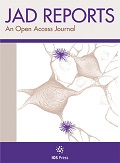Authors: Xiao, Qing | Li, Yonggang | Li, Benchao | Li, Tingting | Li, Fengping | Li, Yuanyuan | Chen, Liangkai | Zhao, Zhuangju | Wang, Qing | Rong, Shuang
Article Type:
Research Article
Abstract:
Background: The evidence concerning dietary diversity and cognitive function remains insufficient. Objective: To investigate the association of dietary diversity score (DDS) with mild cognitive impairment (MCI) and cognitive performance in different domains. Methods: Data from The Lifestyle and Healthy Aging of Chinese Square Dancer Study was used in this study. DDS was constructed based on the intake frequencies of 9 food groups assessed by a validated food frequency questionnaire. MCI was diagnosed by Petersen’s criteria. A neuropsychological test battery was used to assess the performance on cognitive domains, and test scores were standardized to Z scores.
…Multiple linear regression models and logistic regression models were used to estimate the β and odds ratios and their 95% CIs, respectively. Results: Among 1,982 participants, the mean (SD) age was 63.37 (5.00) years, 1,778 (89.71%) were women, and 279 (14.08%) had MCI. Compared to the DDS quartile (0, 6], the multivariable-adjusted odds ratios (95% CI) were 0.74 (0.48, 1.15) for DDS quartile (6, 7], 0.65 (0.43, 0.97) for DDS quartile (7, 8], and 0.55 (0.37, 0.84) for DDS quartile (8, 9]. Furthermore, higher DDS was positively associated with better performance of cognitive domains, including global cognitive function (β= 0.20, 95% CI: 0.12, 0.30), episodic memory (β= 0.21, 95% CI: 0.07, 0.35), attention (β= 0.15, 95% CI: 0.03, 0.26), language fluency (β= 0.24, 95% CI: 0.10, 0.38), and executive function (β= – 0.24, 95% CI: – 0.38, – 0.10). Conclusions: This study indicated that higher DDS was associated with better cognitive function among middle-aged and older Chinese people.
Show more
Keywords: Alzheimer’s disease, cognitive domains, cross-sectional study, dietary
diversity, mild cognitive impairment
DOI: 10.3233/ADR-230060
Citation: Journal of Alzheimer's Disease Reports,
vol. 7, no. 1, pp. 1045-1053, 2023





